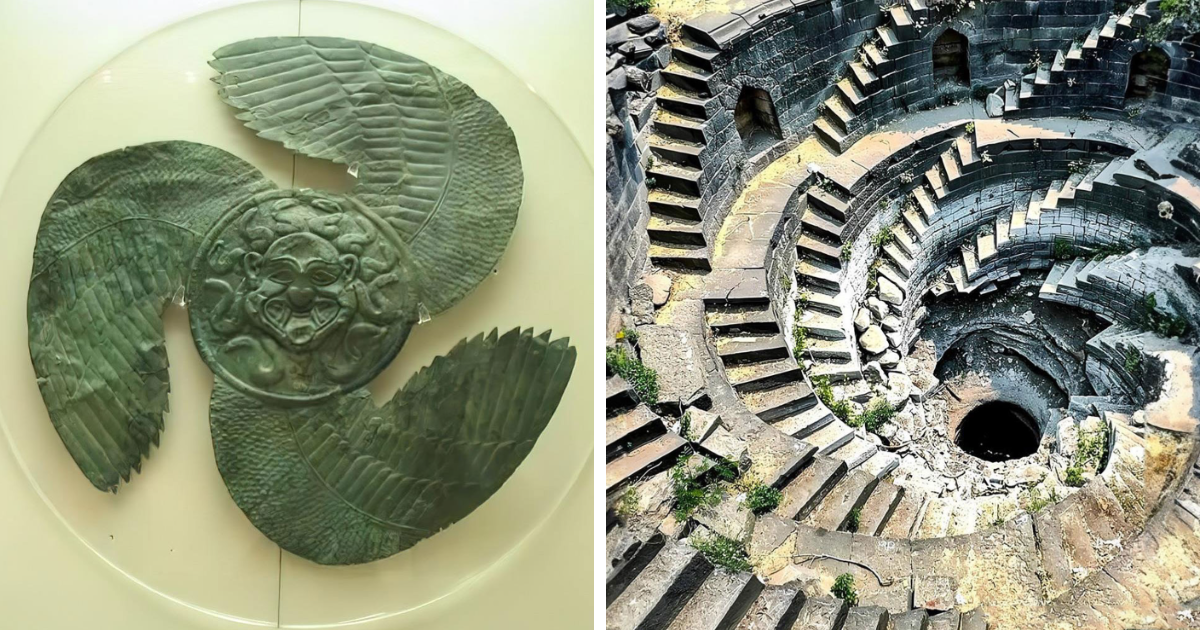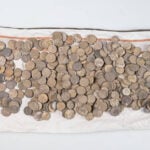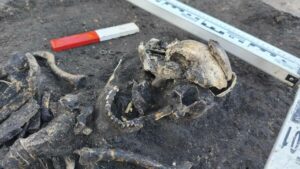ADVERTISEMENT
Curiously devoid of treasures and mummies, the Pyramid of Unas at Saqqara, built over 4,300 years ago for the last Pharaoh of the Fifth Dynasty, invites intrigue and speculation. The walls of its burial chamber are adorned with ancient Pyramid Texts—religious spells designed to guide Unas into the afterlife. This groundbreaking inscription marks a dramatic transformation in Egyptian funerary customs. Scholars are left wondering if the absence of a sarcophagus was due to looting or if it served a purely symbolic role. The rich inscriptions hint that this enigmatic space may have doubled as both a burial site and a ritual sanctuary.
Speaking of surprises, Venus, the second planet from the sun, is moonless. But plot twist: it has a sidekick called Zoozve, a quasi-satellite that’s like a clingy asteroid.
Zoozve orbits the sun but hangs out near Venus in a kind of wobbly cosmic dance. Discovered in 2002, this funky space rock keeps things interesting. Quasi-moons like Zoozve don’t last forever, though they drift eventually. But for now, Venus has a sort-of moon.
ADVERTISEMENT
ADVERTISEMENT
Behold the stunning bronze antenna sword from 9th century BC Germany—a true masterpiece of the Hallstatt B period! Its distinctive curled hilt, echoing antennae, showcases the extraordinary craftsmanship of the Late Bronze Age, serving as a precursor to Iron Age weaponry. The Hallstatt culture, a dominant force in Western and Central Europe, is tantalizingly intertwined with Proto-Celtic societies. This sword, with its elegant design and lethal functionality, transcended mere combat—were its owners not just warriors but symbols of elite power? Now resting in the Stuttgart Landesmuseum, it stands as a striking testament to Europe’s ancient aristocracy.
Did you know there’s a stunning sapphire ring believed to have belonged to Roman Emperor Caligula? Unearthed near Rome in 1910, this nearly 2,000-year-old piece features an intricate design that highlights the extraordinary craftsmanship of the time. The ring even depicts Caligula’s fourth wife, Caesonia! Right now, you can admire this historic treasure at the British Museum. It’s a fascinating glimpse into the opulence of Roman life and the rich history surrounding one of its most infamous emperors. Isn’t it amazing how something so ancient can still captivate us today?
ADVERTISEMENT
Imagine descending into the depths of the Helical Stepwell in Walur, India, a 16th-century wonder that spirals down in a mesmerizing dance of stone and shadow. This architectural marvel was more than a source of water; it was a sacred hub where community and spirituality intertwined. The stepwell’s intricate design reflects the brilliant craftsmanship of its era, serving essential social and religious purposes. As you meander through its winding steps, consider how such creations transformed daily life and spiritual practices, bringing people together as they gathered around this lifeline, a testament to their cultural heritage and ingenuity.
Unlike other planets that spin upright, Uranus is tilted nearly 90 degrees and kind of rolls around the sun. The best guess? A colossal crash in ancient times flipped it over.
This tilt causes it to have wild seasons, where one side stays in sunlight for 21 years while the other is plunged into darkness. Imagine half the planet not seeing the sun for more than two decades. That’s less “summer break” and more “solar sabbatical.”
ADVERTISEMENT
Discovering the Man in the Golden Dress in Kazakhstan’s Issyk Kurgan offers a captivating glimpse into ancient Turkic civilization. Buried in the 5th century BC, this young Tigin adorned a breathtaking golden ensemble that symbolizes wealth and prestige. His tomb also contained a remarkable silver vessel inscribed with Han Uya, conveying condolences on his death. This inscription, created in the Proto-Turkic alphabet, predates the famous Orkhon Monuments by a millennium, illuminating the early evolution of writing among Scythians and Turkic cultures. This extraordinary find not only enriches our understanding of history but also highlights the intricate artistry of the time.
ADVERTISEMENT
This ancient ceramic figurine of a Maya warrior, over 1,500 years old, is a tantalizing glimpse into a world where warriors were not just fighters but revered as protectors against the unknown. With a unique removable helmet, it’s likely a piece of battle gear steeped in symbolism connected to the underworld. Imagine the rituals, the bloodshed, and the belief that these elite warriors guided souls to the afterlife. This artifact pushes us to rethink our understanding of Maya culture—its conflict, its spirituality, and its artistry—challenging the boundaries between life, death, and the cosmic journey in between.
Auto Amazon Links: No products found.




















